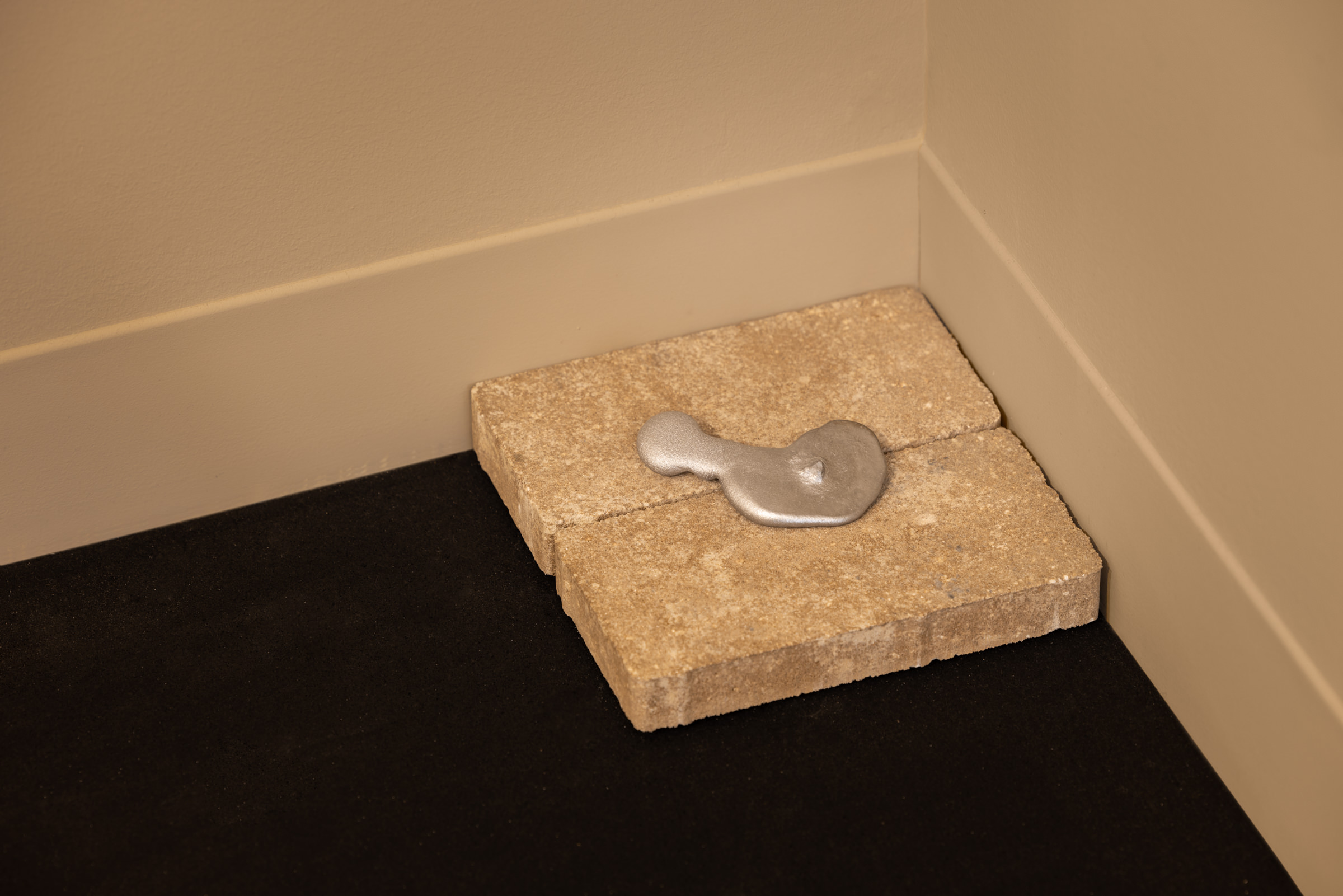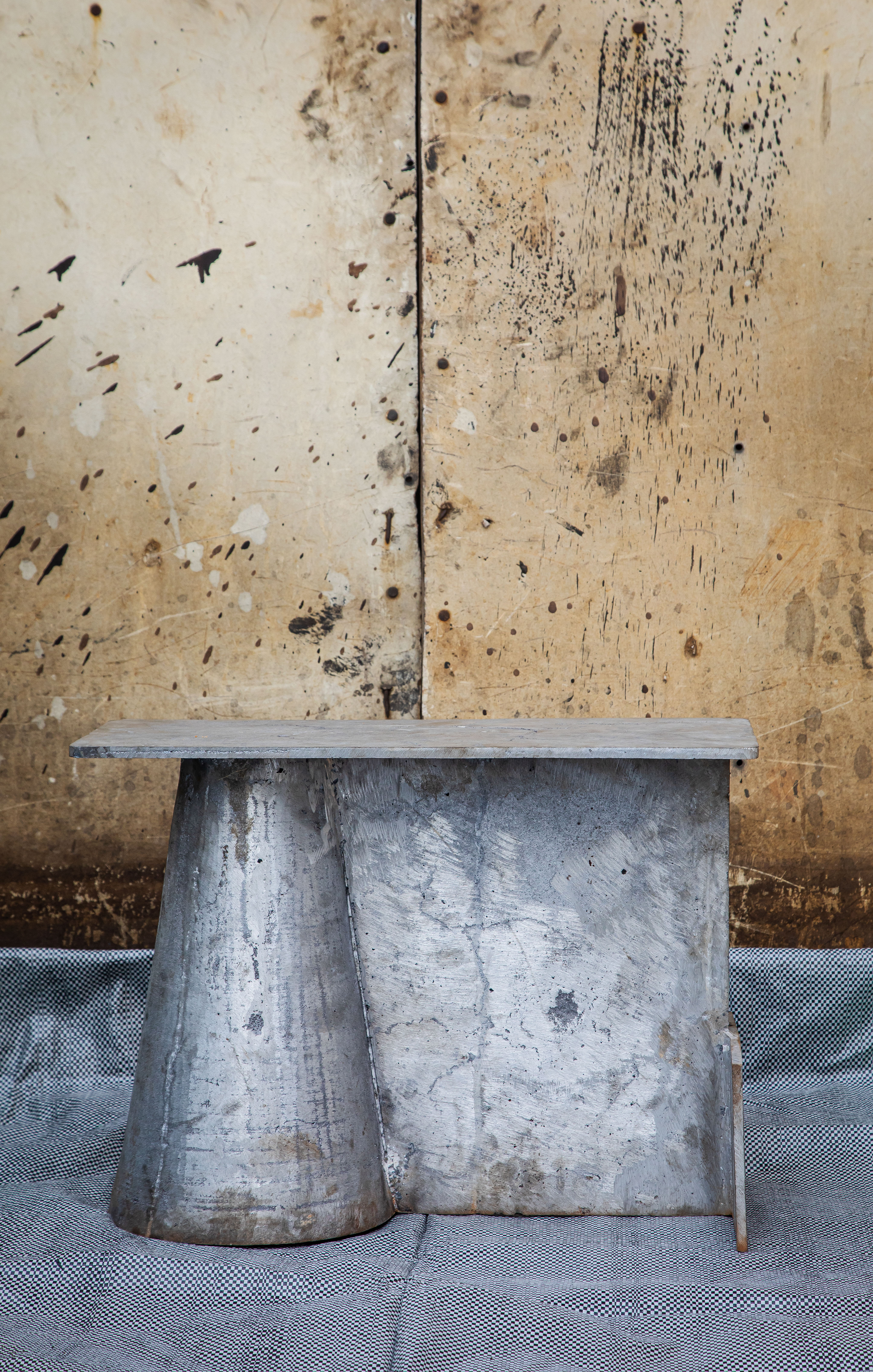Oríkì
ACT II:
TALES BY MOONLIGHT
Oriki is a design series by Nifemi Marcus-Bello that looks to investigate material evolution, production techniques and identify in the hopes to create objects, forms and experiences dictated and driven by the findings. The output of the series will be showcased through various themes, called ACTS.
Miami Beach Convention Center,
Convention Center Drive and 19th Street,
Miami Beach,
Florida 33139,
USA.
Nifemi Marcus-Bello
Oríkì (Act II): Tales by Moonlight
December 6 – 10 2023
Design Miami/
TM Bench w/ Bowl, 2023
Recycled Sandcast Aluminum
44.1 × 15.7 × 20.1 in.
112 × 40 × 51 cm
Edition of 5
TM Bench, 2023
Recycled Sandcast Aluminum
22.0 × 9.8 × 16.5 in.
56 × 25 × 42 cm
Edition of 5
TM Vessel, 2023
Recycled Sandcast Aluminum
16.5 × 13.4 × 13.4 in.
42 × 34 × 34 cm
Edition of 15
TM Moon [Screen], 2023
Recycled Sandcast Aluminum
72.8 × 59.8 × 18.9 in.
185 × 152 × 48 cm
Edition of 5
Images by:
Ọlájídé Ayẹni
Eric Petschek

Named for the beloved children’s television series of the same name (aired on Sundays from 1984–2002 on the Nigerian Television Authority), Tales by Moonlight highlights the personal and collective narratives at the core of Nifemi’s interactions with region- and need-specific craft communities in and around his hometown.
Nifemi began interrogating issues of globalization, production chains, and supply-and-demand dynamics after developing a relationship with a group of autopart casters in Lagos who’d helped repair his personal automobile. Each question he posed; what is a material’s role in society? How does it get here? Who is in charge of its lifecycle? led back to a cottage industry that has emerged across West Africa to fabricate the parts needed for the second-cycle cars that arrive in the region from the United States and Europe, many of which have fallen prey to the generally-accepted and highly-destructive practice of planned obsolescence. These auotopart facsimiles, constructed in sand-cast aluminum the quickest, most affordable, and most recyclable material readily available, ensure the life of imported cars, which, in their original country of purchase are often deemed too expensive or difficult to maintain once their manufacturers cease to make the parts necessary for their upkeep.
Nifemi began interrogating issues of globalization, production chains, and supply-and-demand dynamics after developing a relationship with a group of autopart casters in Lagos who’d helped repair his personal automobile. Each question he posed; what is a material’s role in society? How does it get here? Who is in charge of its lifecycle? led back to a cottage industry that has emerged across West Africa to fabricate the parts needed for the second-cycle cars that arrive in the region from the United States and Europe, many of which have fallen prey to the generally-accepted and highly-destructive practice of planned obsolescence. These auotopart facsimiles, constructed in sand-cast aluminum the quickest, most affordable, and most recyclable material readily available, ensure the life of imported cars, which, in their original country of purchase are often deemed too expensive or difficult to maintain once their manufacturers cease to make the parts necessary for their upkeep.
Nifemi’s exploration of this industry reflects the politics of use in both local and global markets. Through his relationship with these autoparts casters in Lagos, Marcus-Bello was exposed to a material-specific craft that underpins a significant mechanism of transport in Nigeria (4WD vehicles are particularly valuable due to infrastructural demands), which he has integrated into his own practice, collaborating with the same craftsmen to help realize these new designs.
Together, they have produced a body of work that pays homage to the nation’s rich history of craft (previously, Marcus-Bello worked alongside the famed bronze masters of Benin City) while highlighting the designer’s central interest in process and traditional, often vernacular, methods of fabrication. In this collection of formally-related typologies of seating, tabling, presentation, and spatial division, a series of cones, planes, discs, and bowls abstractly reference forms often found in the formalized industrial design of autoparts, thus reframing the cultural, economic, and material genesis of Marcus-Bello’s work.
Together, they have produced a body of work that pays homage to the nation’s rich history of craft (previously, Marcus-Bello worked alongside the famed bronze masters of Benin City) while highlighting the designer’s central interest in process and traditional, often vernacular, methods of fabrication. In this collection of formally-related typologies of seating, tabling, presentation, and spatial division, a series of cones, planes, discs, and bowls abstractly reference forms often found in the formalized industrial design of autoparts, thus reframing the cultural, economic, and material genesis of Marcus-Bello’s work.

















